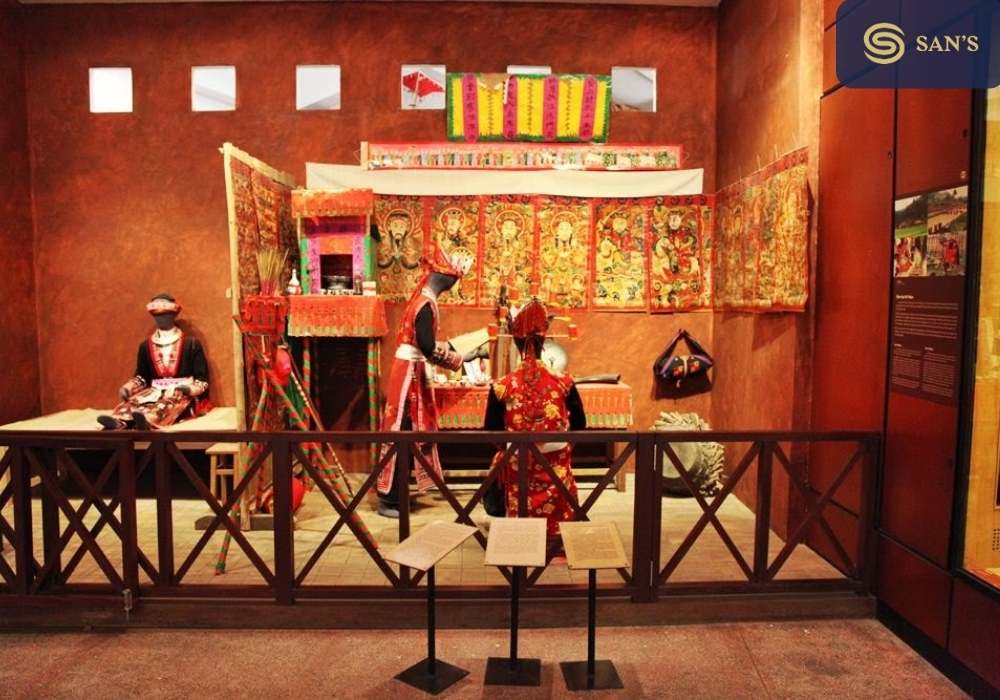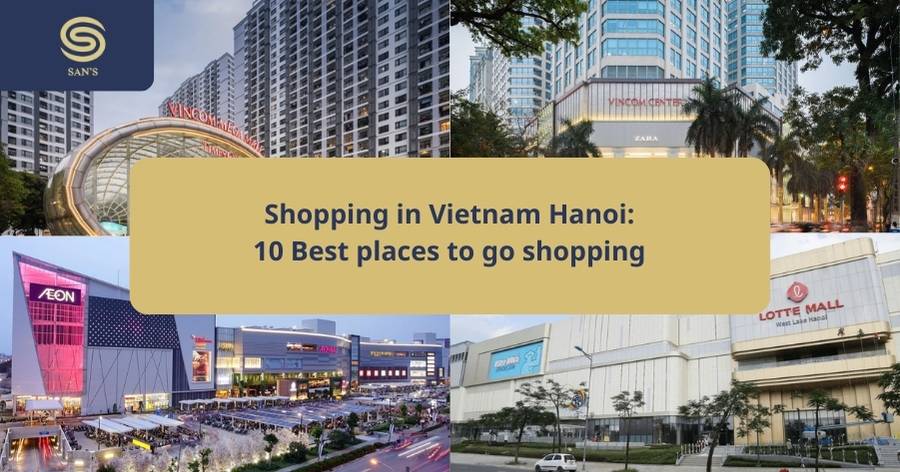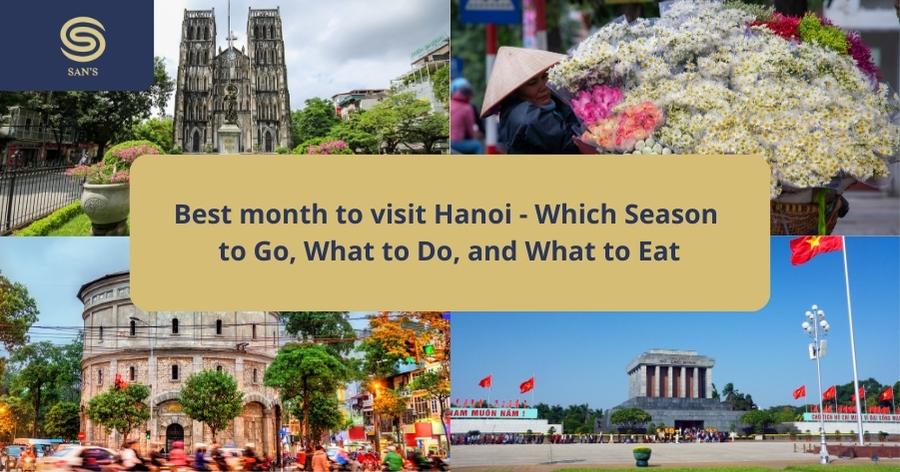Nestled in the heart of Hanoi, the Museum of Ethnology stands as a monumental testament to Vietnam’s rich and diverse cultural tapestry. Established to provide an in-depth look into the intricate mosaic of Vietnam’s 54 officially recognized ethnic groups, the museum is more than just a collection of artifacts. It’s a vibrant journey through time, narratives, and traditions, painting a vivid picture of the nation’s multifaceted heritage.
Through its meticulously curated exhibits, both indoor and outdoor, the Museum of Ethnology preserves the legacy of Vietnam’s ethnic communities, ensuring that their stories, customs, and lifestyles are not just remembered but celebrated. For locals and tourists alike, a visit here isn’t just an educational experience; it’s an intimate dive into the heart and soul of Vietnam.
Background and History
The roots of the Museum of Ethnology trace back to the late 20th century when Vietnam, recognizing the importance of its ethnic fabric, sought to create a space dedicated to its diverse communities. Inaugurated in 1997, the museum quickly grew in prominence, drawing the attention of both national and international audiences.
Over the decades, it has evolved, expanding its collection and reach, but its core vision has remained unchanged: to be a living chronicle of Vietnam’s ethnic groups, fostering understanding, respect, and appreciation among visitors.
-

Museum of Ethnology
The establishment of the museum was driven by a dual mission. First, it aimed to academically document, research, and showcase the multifarious lifestyles, rituals, and traditions of Vietnam’s ethnic communities.
This academic pursuit was complemented by a more profound, societal goal: to foster national unity by highlighting the shared histories and unique distinctions of each group. The visionaries behind the museum believed that understanding and mutual respect among Vietnam’s ethnic groups were crucial for the country’s social harmony and progress.
Today, the Museum of Ethnology stands not just as a repository of artifacts but as a beacon of Vietnam’s commitment to celebrate and preserve its rich ethnic diversity. Through its doors, visitors are invited not merely to observe but to engage, understand, and connect with the very essence of Vietnam’s cultural heritage.
Vietnam’s Ethnic Groups
At the heart of Vietnam’s rich cultural landscape is its astounding ethnic diversity, encompassing 54 recognized groups, each with its own traditions, languages, and customs. From the Kinh, who form the majority, to the smaller communities like the Brau and O Du, each group adds a unique thread to the nation’s intricate societal fabric.
The Kinh may dominate in numbers, residing primarily in the plains and cities, but the highlands and remote corners of Vietnam teem with a riot of cultures. Groups like the H’mong, Tay, Thai, and Khmer, to name a few, have histories that span centuries, marked by distinctive rituals, festivals, and art forms. Each group has its own narrative, some interwoven with others, some standing distinct, but all contributing to the larger story of Vietnam.
-

Museum of Ethnology
Enter the Museum of Ethnology, which takes on the formidable task of capturing the essence of these diverse communities. The museum serves as a bridge, allowing visitors to traverse the vast cultural expanse of Vietnam under a single roof. Through a mix of tangible artifacts and intangible experiences, it provides a window into the daily lives, spiritual beliefs, and societal norms of these groups.
By meticulously curating exhibits that showcase traditional costumes, tools, musical instruments, and even architectural marvels like communal houses, the museum ensures that the unique character of each ethnic group is represented with authenticity and respect. Interactive displays and live demonstrations further bring to life the practices and art forms of these communities, allowing visitors a more immersive understanding.
In essence, the Museum of Ethnology doesn’t just display artifacts; it encapsulates the living, breathing spirit of Vietnam’s ethnic groups, highlighting the shared experiences that bind them together while celebrating the diversity that sets them apart.
Exhibits and Displays
Stepping into the Museum of Ethnology, visitors are greeted by an extensive array of indoor exhibits that offer a journey through time and culture. These exhibits are thoughtfully curated to represent the breadth and depth of Vietnam’s ethnic diversity.
Main Indoor Exhibits:
- Artifacts: A carefully selected collection showcasing everyday items that depict the lives of various ethnic groups. From intricately woven baskets to agricultural implements, these items are windows into daily routines and lifestyles.
- Costumes: Vibrant displays of traditional attire offer a visual treat. These costumes, often adorned with elaborate embroidery, beads, and even silver, represent the artistry and cultural significance of dress across different communities.
- Tools: The museum houses an array of tools used for farming, hunting, and crafting. These tools tell stories of survival, innovation, and the intimate relationship between the communities and their environment.
- Musical Instruments: A delightful segment for music enthusiasts, this section showcases traditional instruments, from the serene sounds of the bamboo flutes of the Tay people to the rhythmic beats of the H’mong’s drums.
-

Museum of Ethnology
Open-Air Exhibition: Beyond the indoor galleries, the museum grounds house an impressive open-air exhibition. Here, visitors can walk amidst life-sized reconstructions of traditional dwellings, ranging from the stilted houses of the Thai people to the communal longhouses of the Ede. These structures, made using authentic materials and techniques, provide a tangible experience of architectural diversity and the nuances of communal living.
Special Temporary Exhibits and Events: The Museum of Ethnology keeps its offerings fresh and dynamic with a rotation of temporary exhibits. These often spotlight specific aspects of culture, such as festivals, rites of passage, or even culinary traditions. Furthermore, the museum frequently hosts events, workshops, and performances, offering visitors the chance to engage with traditional dance, music, and crafts, ensuring a varied and enriching experience with each visit.
In summary, the Museum of Ethnology brilliantly fuses the static and the dynamic, the tangible and the experiential, inviting visitors to not just observe, but to immerse themselves in Vietnam’s rich ethnic tapestry.
The Museum of Ethnology in Hanoi stands as a testament to Vietnam’s profound commitment to its cultural heritage. More than just a space filled with artifacts, it weaves a narrative of the nation’s vibrant ethnic diversity, bridging past and present.
-

Museum of Ethnology
In a world where traditions often fade amid modernity, this institution emerges as a beacon, illuminating the richness of Vietnam’s cultural tapestry. It not only safeguards historical treasures but instills a sense of pride and understanding, underscoring the unique and shared journeys of Vietnam’s many communities.
FAQs
- What are the operating hours of the Museum of Ethnology?
The museum is open from 8:30 AM to 5:30 PM, Tuesday to Sunday. It is closed on Mondays and certain public holidays. - Is there an entrance fee?
Yes, there’s a nominal fee for adults, with discounts available for students, seniors, and children. Group rates may also be available. - How long should I plan for a visit?
For a comprehensive experience, we recommend allocating at least 2-3 hours. This will allow you to explore both the indoor exhibits and the open-air displays. - Is the museum child-friendly?
Absolutely! The museum offers interactive sections and hands-on workshops that are engaging for visitors of all ages, including children. - Are guided tours available?
Yes, the museum offers guided tours in multiple languages. It’s advisable to book in advance, especially during peak tourist seasons. - Why is the Museum of Ethnology significant?
The Museum of Ethnology plays a pivotal role in preserving and showcasing the diverse ethnic backgrounds of Vietnam. It offers a deep dive into the traditions, customs, and lifestyles of various communities, making it an essential visit for those keen on understanding Vietnam’s cultural tapestry. - Are there any special events or workshops I can attend?
The museum frequently hosts traditional music sessions, pottery workshops, weaving demonstrations, and lectures. It’s a good idea to check their event calendar or inquire at the information desk upon arrival. - Is photography allowed inside the museum?
Photography for personal use is generally allowed, but flash and tripods might be restricted in certain areas. Always respect signage and guidelines provided by the museum staff. - Is there a gift shop?
Yes, the museum has a gift shop where visitors can purchase souvenirs, handcrafted items, books, and other memorabilia related to the exhibits. - Why is the museum essential for understanding Vietnam’s cultural diversity?
The Museum of Ethnology meticulously documents and displays the heritage of Vietnam’s 54 ethnic groups, offering unparalleled insights into the country’s cultural and historical fabric. A visit here provides a comprehensive understanding of the communities that shape Vietnam’s identity.
>> See more: Famous Destinations in Hanoi





